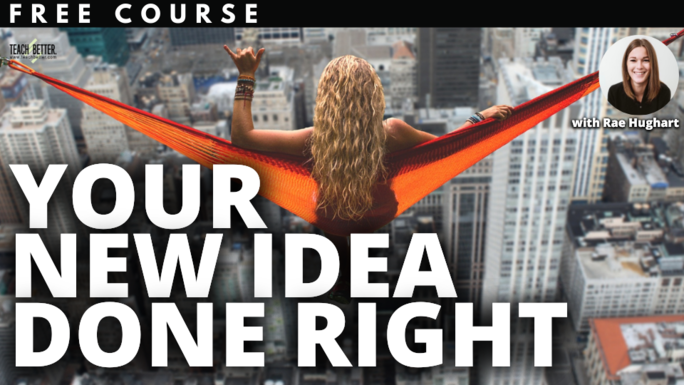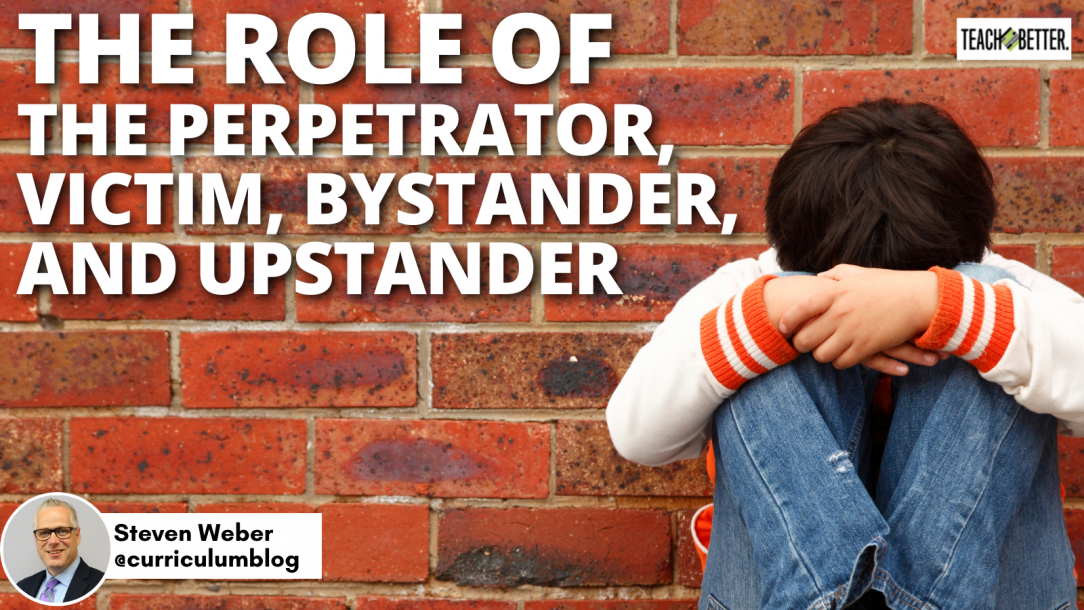TL;DR:
- Teachers and administrators make multiple decisions each day. These decisions can have a long-lasting impact on a student.
- When making decisions as an administrator or school team, they should ask three questions about access, inclusion, and equity.
- There needs to be a sense of urgency to ensure we prepare each learner for the next level. We need to be an upstander and an advocate ready to challenge inequities and eager to identify solutions to the barriers staff and students face.
- Reflect on your past experiences in your role to reconsider whether you chose to be the perpetrator, victim, bystander, or upstander. In any new situation, we get to decide what role we choose to play. Our moral compass compels us to be an upstander.
Decisions, Decisions
Teachers and administrators are required to make multiple decisions each day. When two students get into a fight at recess, a decision must be made related to consequences, restorative practice, and how to help the students re-enter the learning environment as classmates.
When a school team analyzes data from a common formative assessment, some teachers may moan that the students are the problem, while another teacher may advocate for academic support and interventions. A principal may be placed in a challenging dilemma when a student challenges a teacher’s instructional strategies or has erred in professional conduct. Does the principal support the student making the claim or brush it aside and support the teacher? In any given moment, the choice one or more teachers and administrators make could have a long-lasting impact on a student.
In any situation, professionals have several decisions to make.
Facing History and Ourselves provides a curriculum that addresses the role of the perpetrator, victim, bystander, and upstander. The intent of this article is not to frame the perpetrator as the evil doer and the upstander as the model teacher. A cage-busting leader may be viewed as a perpetrator. “Cage-busting is about doing everything possible to promote your vision of great teaching and learning – no matter what” (Hess, 2013, p. 10). There are moments when a perpetrator persuades the faculty or the superintendent to change direction or create revised procedures. The perpetrator could be viewed as a hero or villain by colleagues.
The role of the victim is not a role that most students or staff sign up for, yet there are victims in every school. Teachers and administrators should fight for each learner and advocate for policies and procedures which create an opportunity to learn, along with access and equity.
No matter your role in education, you must be an advocate for all learners...ready to challenge inequities and eager to identify solutions to the barriers that students and staff face. Click To TweetWhen making decisions as a school team and as an administrator, educators should ask three questions:
- Which students have access to this course, club, or activity?
- Which students are being excluded or discouraged from participating?
- What needs to change in order to support access and equity?
Decisions in schools are often based on tradition. When tradition goes unchallenged or unexamined, someone or a group of people may become the victim. It can be difficult for teachers and administrators to see through the eyes of a diverse student population, so it is important for staff to develop focus groups, feedback loops, or other strategies to identify victims and areas for school growth. A fourth question to ask is, “How do we include students and families when making decisions?” Challenging the status quo is difficult when the same voices are always heard.
Need for Change
Dr. Martin Luther King, Jr. (1967) said, “We are now faced with the fact that tomorrow is today. We are confronted with the fierce urgency of now. In this unfolding conundrum of life and history, there is such a thing as being too late. This is no time for apathy or complacency. This is a time for vigorous and positive action.”
Education in the COVID-19 era certainly creates a ‘fierce urgency of now.’ As educators, we owe it to students to have a sense of urgency and to prepare each learner for the next level. This is the only 7th grade experience that students will receive. When educators view the role of bystanders and upstanders, they are making a choice. Bystanders, by nature of the name, stand by and observe. According to Facing History and Ourselves (2021), an upstander is a “person speaking or acting in support of an individual or cause, particularly someone who intervenes on behalf of a person being attacked or bullied.”
“Every leader, to be effective, must have and work on improving his or her moral purpose” (Fullan, 2020, p. 19). No matter your role in education, you must be an advocate for all learners. As an upstander, you enter meetings ready to challenge inequities and eager to identify solutions to the barriers that students and staff face. Your moral purpose is what compels you to be an upstander.
Educators Need to Ask the Following Questions:
- Who do I need to be in this classroom/meeting/professional development?
- Who do others need me to be in this classroom/meeting/professional development?
- What could happen if I do not choose to be a Perpetrator, Victim, Bystander, and Upstander in this moment?
- Who are the victims? Am I leading in a way that makes me a bystander or an upstander to the victims?

Role of Perpetrator, Victim, Bystander, or Upstander
During the past twelve months, educators have made decisions related to virtual learning, homework, grading practices, special education, promotion/retention, connectivity, school meals for remote learners, virtual parent-teacher conferences, Zoom faculty meetings, instructional strategies, master schedule, student clubs, field trips, and more. Reflect on the decisions you have been required to make due to COVID-19. Were there times that you should have played a different role?
Can you reflect on a time in your career when you chose to be the perpetrator, victim, bystander, or upstander? The students may attend your school virtually or in person this year. No matter how students attend school, there will be a decision point when you must decide which role to play. “Every time we encounter new information, we have a choice. We can attach our opinions to our identities and stand our ground….or we can operate more like scientists, defining ourselves as people committed to the pursuit of truth – even if it means proving our own view wrong” (Grant, 2021, p. 76).
References
Facing History and Ourselves. (2021). From the unit Teaching Holocaust and Human Behavior. Retrieved from https://www.facinghistory.org/resource-library/teaching-holocaust-and-human-behavior/kristallnacht
Fullan, M. (2020). Leading in a culture of change (2nd edition). Jossey-Boss.
Grant, A. (2021). Think again: The power of knowing what you don’t. Viking.
Hess, F.M. (2013). Cage-busting leadership. Harvard Education Press.
King, M.L. (1967). American Rhetoric. Retrieved from https://www.americanrhetoric.com/speeches/mlkatimetobreaksilence.htm
About Steven Weber
Dr. Steven Weber is the Associate Superintendent for Teaching and Learning with Fayetteville Public Schools (AR). His areas of research include curriculum design, formative assessment, professional learning, and school leadership.



